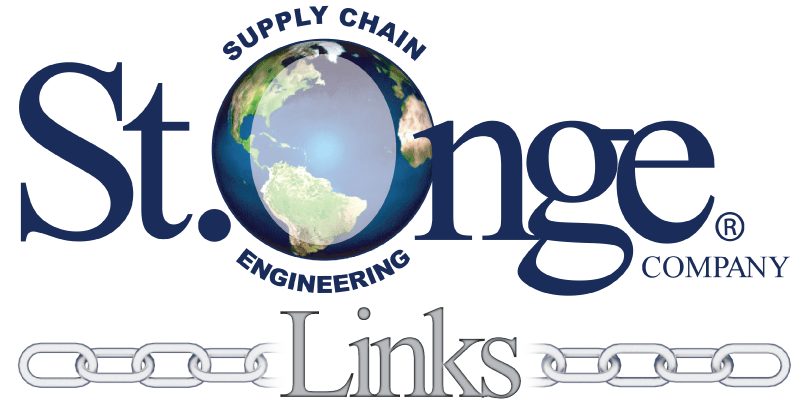
What’s Your Issue? Distribution Center Issue That Is…
Most distribution center or warehouse operational issues can be found in a few areas, including data, processes, equipment, labor, and systems/technology. It helps to breakdown these areas to address potential issues and savings opportunities within your operation.
Data (Quality)
An underlying issue limiting fulfillment speed is the lack of quality data informing a design and supporting operations management. The top issue is often missing or inaccurate item master data, including vendor case dimensions and weights, units per case, and cases per pallet. This information is valuable in determining if an item is conveyable and selecting the appropriate pick location size. Order history data is also required to generate profiles including each and full case pick volume activity, lines per order, units per line, and other profiles. But, the application of the item master details with the order volumes/profiles is the key to designing and managing an operation. There are multiple dimensioning systems available to collect this information and it should be a top priority. While it may seem too late to integrate this data into an existing operation, it can be used for daily planning and adjustments to the design.
Processes
A warehouse process physically starts with unloading trailers and stocking inventory into the storage area. The storage area holds inventory that enables picking orders and replenishing forward pick areas. The last 100-feet of an operation includes the packaging and manifesting functions and is often a limiting factor within higher throughput facilities. However, the most common area for finding improvements is in the order picking process. This is where the majority of labor is found in a distribution center. When studying the pick area, the next process improvement opportunity is replenishing the pick locations. These two processes must be synchronized in order to have the highest possible throughput. The additional challenge is most ‘process’ improvements require modifications to equipment and/or systems to realize the greatest savings. For example, converting to a batch-picking process, using a min/max replenishment strategy, integrating pick & pass, using cartonization logic, applying automatic label print/apply technology, and executing velocity-based slotting all require changes to equipment and/or systems.
Equipment
The selection of pick equipment (i.e. shelving, case flow, pallet flow, shuttles, AMRs, etc…) and the facility layout are critical to achieving short cycle times. Design flexibility is also important for handling unexpected demands, such as acquisitions. The pick location sizes should be based on supporting a targeted ‘days of supply’ that minimizes replenishments, while not oversizing the pick area. This balancing act is a major challenge faced by managers. Not having inventory in the pick location at the time of pick is the greatest risk to lengthening order cycle times. Yet, putting too much, or all of the inventory in a pick location increases the pick area footprint, which lengthens order cycle times (and expands capital budgets).
The sizing effort starts by apply the items dimensions with the expected daily volumes. With this analysis, you can evaluate an effective days-of-supply varied by the item’s velocity. Ideally, the fastest movers (A-items), are adequately stocked in the pick locations to hold about two weeks of inventory. The dilemma is how much space and what equipment is required to provide this amount of inventory. Generally, for A-items, it is not feasible to stock more than a month of inventory in the pick location or you risk oversizing the pick area. Ironically, the slower items (assuming similar item sizes), may have months of inventory in the smallest location. These slower items may also be picked directly from reserve storage to provide more space in the pick area for faster movers. Dynamic slotting may also be an option, which requires a pick location size that supports changing volumes based on multiple factors. However, dynamic slotting may increase replenishment labor versus a fixed location strategy, so there is often a hybrid approach. This location sizing analysis is a balancing-act involving the cost of pick / replenishment labor and the size / capital cost of the forward pick area.
Handling Equipment
There is a wide range of material handling equipment integrated within the pick area including carts, conveyor, lift trucks, and fully-automated product-to-person technologies. To increase productivity and accelerate order fulfillment, most operations utilize a multi-level pick platform with conveyor to transport totes or shipping cartons through pick zones, put-walls, dunnage machines, auto-labeling, and pack stations. In more sophisticated designs, automation, such as AMRs (automated mobile robots) are used to automatically move products to pick and pack stations.
The use of automation is rapidly growing to improve fulfillment throughput and productivity, but requires additional capital. Building a solid return on investment is required to justify the additional investment with savings mostly within the pick and replenishment labor functions. While automation is the solution for many, misaligned processes, equipment, and limited staffing can quickly lower the expected returns.
Labor
Productive workers are essential to fast order fulfillment and they are becoming harder to find and keep. This has caused some to overstaff, resulting in higher costs per unit and an unproductive work environment. Others, have limited staffing options and are relying more on a temporary workforce. Whatever the situation, providing quality training and a comfortable work environment are important to attracting and retaining workers and achieving higher productivity. Additionally, using the right number of supervisors (~20% ratio to employee count) can keep fulfillment flowing efficiently. Many deploy labor management software as a solution, but these systems can backfire if the proper amount of time is not allowed to build accurate standards and for change management. Workers should be held accountable for performance, but need an efficient design, proper training, supervision and supportive systems.
Systems/Technology
An effective system should enable a well-designed solution and not add constraints. The ability to batch orders (i.e. single-line orders) and wave management are valuable capabilities to speed-up fulfillment. Systemically driving replenishment to ensure pick locations have the required demand is another must-have functionality. Establishing an on-going slotting strategy is critical to managing congestion and increasing labor productivity. Many companies are dealing with dated systems, and are aggressively looking for system modifications and bolt-on solutions to speed -up fulfillment.
To have an efficient operation it is important to establish an efficient process and size the forward pick area to balance pick and replenishment labor. This balance requires the right mix of equipment and integration of material handling technology. For an operation to remain productive the workforce must be properly managed and trained. Maintaining consistent fulfillment speeds requires the support of systems to empower the design and enable high productivity levels. Identifying the specific reasons for sluggish order fulfillment and unleashing the potential can be discovered by breaking-down processes, equipment, layout, labor management, and software.
—Norm Saenz, St. Onge Company





